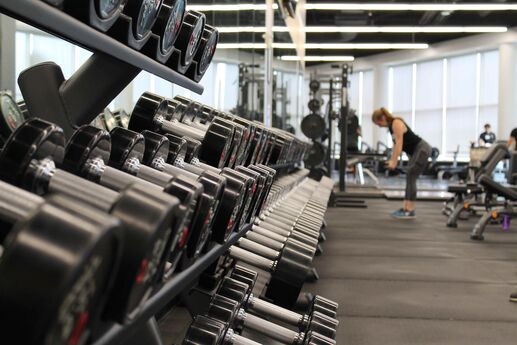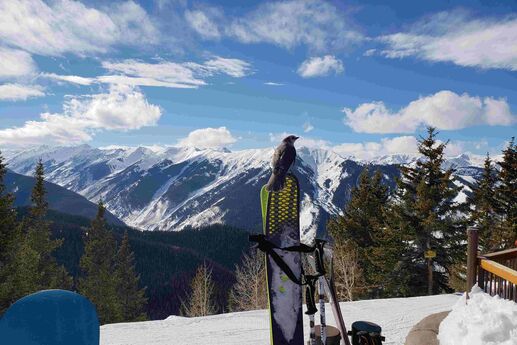The Ultimate Gift Guide for Dad
Do you even remember what you gave your dad last Christmas, or the Christmas before that? If you don’t, then he probably doesn’t either -- or doesn’t want to, anyway. This year, gift him one of the father-son experiences described below, or come up with one of your own. Either way, neither one of you will forget it anytime soon.
Rent a Beast
There may be a dad in America who doesn’t get a kick out of a Mercedes-Benz SLS with the gullwing doors or a gleaming new Porsche Panamera. It’s possible. But so is life on Venus. So why not take your dad’s car into the garage for a full wash, wax and detail, and rent some dream wheels for a day? Pick a cozy restaurant 200 miles away, set the GPS and just drive. Remember to bring a camera. He’ll want it framed.
BWRentACar.com
Get Tickets for Game Day
Whether it’s football, baseball or college basketball, there’s a sport that gets your dad’s blood pumping. So get tickets one day for just you and him. It doesn’t matter if they’re in the nosebleeds; you’ll yell and cheer and eat hotdogs. After all, this is why sport was invented: for fathers and sons to bond. Let it happen.
Catch a Gig
Not all of the bands in your dad’s record collection are getting wheeled around nursing homes. Many are still performing. Bob Dylan, the Beach Boys, Billy Joel and Bruce Springsteen all played this year -- and that’s just the B’s. Your dad will never forget the day you sent him down memory lane. And you know what? It beats Justin Bieber.
TicketLiquidator.com
Go Fish
Just because the snow’s thick on the ground doesn’t mean you and dad can’t go fishing. You just need to pack differently: mittens instead of a sunhat, a thermos instead of a cooler. To spend an afternoon on the ice, bobbing through crust for walleye or perch, has all the lazy bliss of summer fishing -- but with a dangerous edge. Quality time slows down on a lake, and conversation often veers into uncharted waters. As Herbert Hoover said, “All men are equal before fish.”
Fix It
Fathers long for the day that their sons might ask to help build or mend something around the house. It doesn’t matter what it is -- fixing a motorbike, laying down some tile, mending a fence or building shelves. What matters is that you build more than just shelves when you work on a project like that together. Find that project, mention it to the old man and watch the happiness spread across his face.
Shoot and Score
Here’s a Second Amendment remedy you can believe in: Shooting. It’s a blast. And it’s as American as apple pie. Spend a father-and-son afternoon on the firing range unloading with every kind of gun you ever saw on TV. If dad’s the NRA type, a day on the firing range is nothing short of a slice of heaven. But even if he’s not, he’ll still have the time of his life. Because all men are boys and all boys love guns.
NRAHuntersRights.org
Spend a Day at the Races
The sport of kings and degenerate gamblers, horse racing is also a great day out for the family. The sheer spectacle of the crowds, the thoroughbreds, the thundering hooves. The surge of excitement when the gates snap open and the galloping begins. Share a little flutter with the old man and shout yourself hoarse. If either one of you wins, it’ll be a day he’ll talk about for years.
Be a Chef
The father-son team is a beautiful thing. At the holidays, even more so. So here’s how to do it, to be the son of all sons. Just as the giant family dinner looms, suggest to your dad that you and he make the dinner for a change. Just the two of you, a team of two. Your mother will love putting her feet up, and your dad, just watch him swell with pride. Top it off with matching aprons and chef’s hats.
Fly
Now, here is a good time that everyone should try at least once: Indoor skydiving in a vertical wind-tunnel. As a giant fan blows up at you, you’re above the ground, supported by a cushion of air. An instructor teaches you how to do somersaults, flips and tricks. You and your father can be an acrobatic sky troupe together, tumbling in unison.
IFlySFBay.com ; IFlyUtah.com ; IFlyHollywood.com
Go Rock ’n’ Roll Bowling
There are some things in life that are universally popular, regardless of age, gender or background -- like ice cream. Or a night of rock ’n’ roll bowling. Your dad may be a bowling fanatic, in which case this is a slam dunk. But even if he’s not -- and this is the beauty of bowling -- he’ll have a great time. It’s said that the families who bowl together, stick together. You could make it just a father-son thing, or get the whole family involved. Either way, Dad’s the team leader, needless to say.






